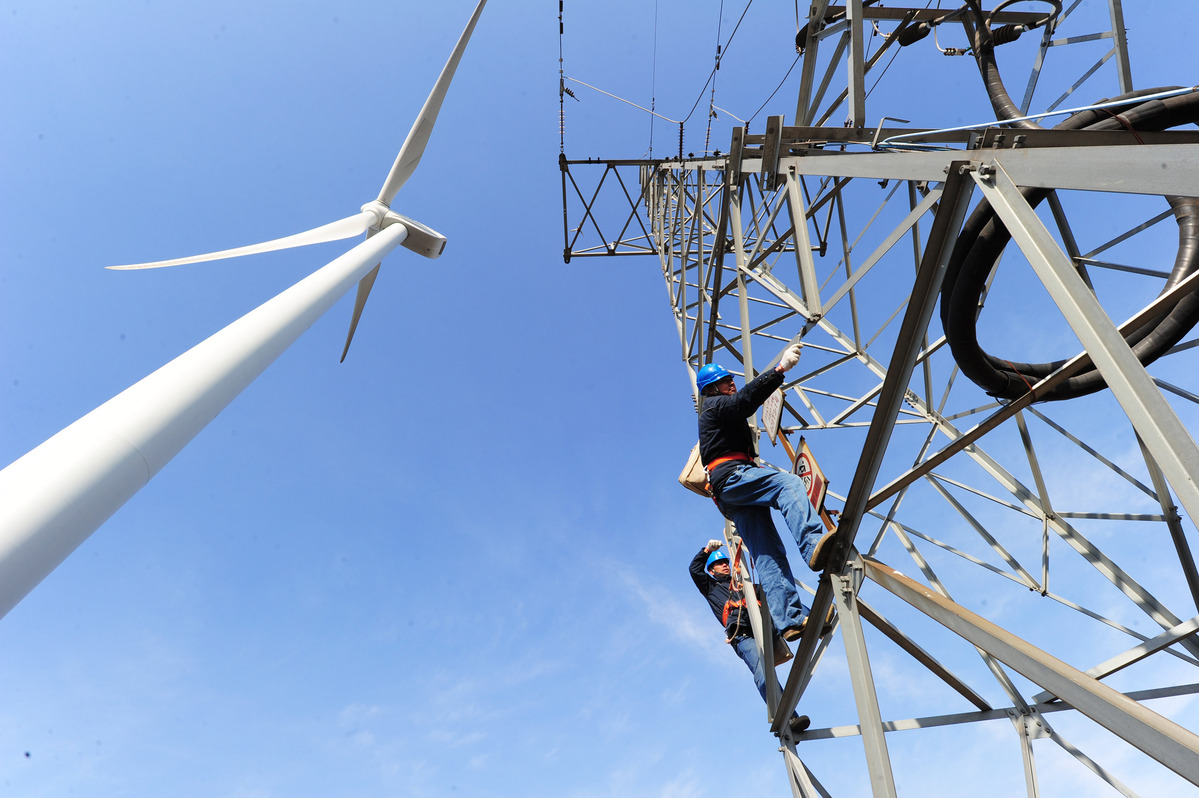
Two State Grid technicians check power transmission facilities in Chuzhou, Anhui province. [Photo by Song Weixing/For China Daily]
China published a white paper titled "China's Energy Transition" last week outlining the historic achievements it has made in its energy transition over the past decade and sharing its practices with the world. Home to 1.4 billion people, how China produces and consumes energy greatly affects not only its own people but the future of people around the world.
China has made resolute and sustained efforts to advance its energy transition. In 2023, clean energy consumption accounted for 26.4 percent of China's total energy use, up 10.9 percentage points from 2013. Over the same 10-year period, China had one of the most rapid energy intensity reduction rates in the world, recording a 26 percent decrease. Its cumulative reduction of carbon dioxide emissions was approximately 3 billion tonnes, according to the document.
China has been shifting from a resource-reliant energy development model to one driven by innovation. By applying an innovation-driven development strategy within its energy sector, it has achieved core technology breakthroughs and created new industries and business models. What is more, China's new energy products have provided clean, reliable and affordable solutions to a world that faces the challenges of energy security and the need to realize a green, low-carbon transition as soon as possible.
Over the past decade, the global average kilowatt-hour cost of wind projects has fallen by more than 60 percent, and that of photovoltaic projects by 80 percent, largely due to China's contributions, according to the International Renewable Energy Agency. Global new energy production capacity is not excessive; it is insufficient. The production capacity of the global new energy industry is far from meeting market demand to achieve the temperature control target of the Paris Agreement, especially in developing countries where energy demand is experiencing dynamic growth.
The global demand for new energy vehicles will reach 45 million units in 2030, which is three times the 2023 figure, and the global power battery demand will hit 3,500 gigawatt hours, which is four times the level of global power battery shipments in 2023, according to the International Energy Agency.
China is committed to pursuing an energy transition, which will also create new opportunities for deepening international cooperation on clean energy. The country has implemented a foreign investment management system based on pre-entry national treatment and a negative list, and removed restrictions on foreign investment in all energy industries except nuclear power plants.
China will continue to advance its energy transition and share its knowledge and experience with other nations for the development of global sustainable energy and the building of a community with a shared future for humanity.
For the future of the planet and all who live on it, countries should abandon all forms of unilateralism and trade protectionism, and work together to maintain the stability and smooth flows of the global energy industry and supply chains.
Source: By Xinhua News Agency, chinadaily.com, Sep 03, 2024 [https://www.chinadaily.com.cn/a/202409/03/WS66d645f8a3108f29c1fc9b3d.html]

